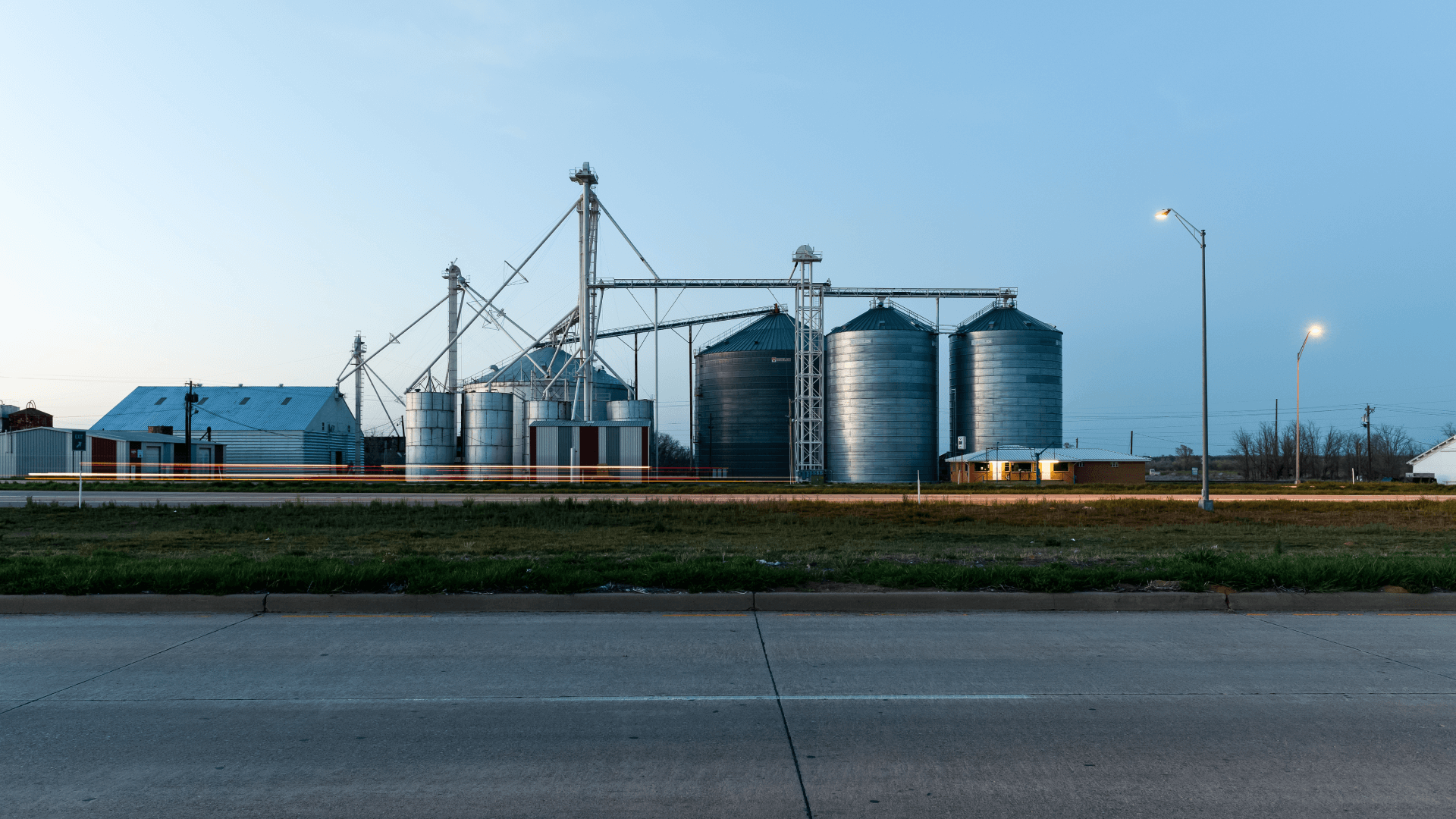Looking to buy a house in Texas? If you're looking for your family home, you’ve likely got your own personal list of criteria — close to a park, by your kid’s school, within a reasonable commute to your job. But if you’re looking to purchase Texas real estate as an investment or rental property, the criteria are much simpler: Can you afford it, and will it make you money?
For this list of the best places to buy a house in Texas, we looked at the 50 largest cities in the second-most populated state in the United States and compared them across three main factors: the cost it takes to enter the real estate market (represented by typical home price and taxes), real estate appreciation values, and the state of the rental market (represented by the rent-to-home value ratio, the rental vacancy rate, and the rent-to-income ratio).
For the 50 cities in Texas in our study, these are the averages for the metrics we measured (for more on these metrics and how we calculated them, including our data sources, see Methodology below):
Typical home value: $260,456
Home value appreciation: 41.59%
Effective property tax rate: 1.88%
Rent-to-home value ratio (presented as a percentage of typical home values): 5.31%
Rent-to-income ratio (presented as a percentage of average incomes): 27.33%
Rental vacancy rate: 7.82%
Explore related topics
The top 15 places to buy a house in Texas in 2023
1. Waco, Texas
Waco, population 135,858, is the best city for the real estate investor to buy a house in Texas, according to our study. This top spot is unsurprising to anyone familiar with Chip and Joanna Gaines, their company Magnolia, and its outsize influence on Waco and central Texas. Typical house value is $182,229, 30% below the average of the cities in our study. Home appreciation over the last five years is 70.1%, which is 69% higher than the average of the cities in our study. The effective tax rate is 1.91%. The Waco rental market is good for property owners, with an average rent-to-home value ratio (5.68%), an above-average rent-to-income ratio (21.2%), and a below average rental vacancy rate (4.6%).
2. Garland, Texas
Next on our list of best places to invest in real estate in Texas is Garland, the north Dallas suburb with a population of 238,418. Typical house value is just 1% below average for the cities in our study at $256,909, but home value appreciation over the last five years is 41% above average at 58.8%. The effective tax rate in Garland, which is part of Collin County, is 1.91%. The rent-to-home value ratio is average at 5.29%, the rent-to-income ratio is below average at 18.1%, and the rental vacancy rate is below average at 5.9%.
3. Brownsville, Texas
With a typical house value of $135,623 — 48% below the average for the cities in our study — Brownsville, population 182,271, ranks three on our list of the best cities in Texas for purchasing investment property. It is located at the southern tip of the state, adjacent to both the Mexican border and the Gulf of Mexico, and boasts the third-highest proportion of Hispanic Americans in the country; they make up 93.9% of the population. House value appreciation over the last five years is 47%, 13% above average. The effective tax rate is 2.05%. The rent-to-home value ratio is above average at 6.51%, the rent-to-income ratio is below average at 16.9%, and the rental vacancy rate is below average at 7%, all good things for landlords.
4. Grand Prairie, Texas
The typical house value in Grand Prairie, the Dallas-Fort Worth metro area city with a population of 192,565, is $275,075. That value puts the city, which broke ground on a new convention center in 2021, at 6% above average for the cities we looked at in our study, but a high home value appreciation rate 64.8% helps put it on our list of the best cities to buy a house in Texas. The effective tax rate is 2.09%. The rent-to-home value ratio is below average at 4.76%, the rent-to-income ratio is below average at 21.5%, and the rental vacancy is below average at 5.3%.
5. Dallas, Texas
With a population of 1.33 million, a typical house value of $275,164 (6% higher the average for the cities in our study), and a five-year home value appreciation of 58.4% (40% higher than the average), Dallas is five on our list of best cities for home buyers in Texas. In addition to five major league sports teams, Dallas is home to the largest urban arts district in the country. The effective tax rate is 1.82%. The rent-to-home value ratio is 4.59%, the rent-to-income ratio is 2.5%, and the rental vacancy rate is 8%.
6. Beaumont, Texas
A low typical house value (47% below average at $138,373) and a low rental vacancy rate (4.7%, versus the average of 7.82%) help put Beaumont, population 118,151, at six on our list of best places to invest in Texas real estate. The city is just 30 miles from the Gulf of Mexico and 85 miles from Houston, and the top employer is Lamar University. House value appreciation is below average of the cities in our study at 18.3%. The rent-to-home value ratio is above average at 7.53% and the rent-to-income ratio is below average at 22.7%. The effective tax rate is 1.82%.
7. Mesquite, Texas
Mesquite, a suburb east of Dallas with a population of 143,456, ranks seven on our list of best cities for real estate investors in Texas. Its typical house value is $234,057, 10% below average. Its five-year house value appreciation is 67.3%, 62% higher than average. The effective tax rate is 1.74%. The rent-to-home value ratio is 5.66%, the rent-to-income ratio is 28.3%, and the rental vacancy rate is 9.4%.
8. Fort Worth, Texas
With a five-year house value appreciation rate of 63.4% (52% above the average of the cities in our study) and a population of 874,401, Fort Worth, the fifth-largest city in Texas and the second-largest in north Texas, is eight on our report on the best place to buy a home in Texas. Typical house value is $266,564, 2% above average. The effective tax rate is 2.12%. The rent-to-home value ratio is 4.77%, the rent-to-income ratio is 4.3%, and the rental vacancy rate is 10.2%.
9. San Antonio, Texas
San Antonio, the second-largest city in Texas with its population of 1.51 million people, comes in at nine on our list of the best cities for real estate. Typical house value is 11% below average at $232,885, and the five-year house value appreciation is 8% above average at 44.8%. The effective tax rate is 1.97%. The rent-to-home value ratio is below average at 5.11%, the rent-to-income ratio is below average at 2.4%, and the rental vacancy is average at 7.7%.
10. Killeen, Texas
With a typical house value of $182,274, which is 30% below the average of the cities in our study, Killeen, a military town with a population of 145,686 bolstered by the adjacent Fort Hood, is number 10 on our list of the top cities for home buying in Texas. Five-year house value appreciation is 53%, which is 27% above average. Effective tax rate is 2.07%. The rent-to-home value ratio is 6.08%, the rent-to-income ratio is 20.8%, and the rental vacancy rate is 9.8%.
11. Irving, Texas
Dallas suburb Irving, population 239,783, is 11 on our list of Texas cities that are good for investing. Typical home price is above average at $288,398, but house value appreciation is 29% above average at 53.6%. The effective tax rate is 1.93%. The rent-to-home value ratio is 4.77%, the rent-to-income ratio is 16.1%, and the rental vacancy rate is 6.6%.
12. Arlington, Texas
The north Texas city of Arlington, population 395,477, is 12 on our list of Texas’s best cities to buy a house in. Typical house value is 6% above average at $275,745, and the five-year house value appreciation is 63.6%. The effective tax rate is 2.01%. The rent-to-home value ratio is 4.59%, the rent-to-income ratio is 9.4%, and the rental vacancy rate is 9.3%.
13. Abilene, Texas
The typical house value in Abilene, population 124,156 and home to Dyess Air Force Basis, is $163,551, 37% lower than the other cities in Texas we looked at for this study. The five-year house value appreciation is 33.5%. The effective tax rate is 1.66%. The rent-to-home value ratio is 6.78%, the rent-to-income ratio is 25.9%, and the rental vacancy rate is 7.1%.
14. Pasadena, Texas
With a typical house value of $193,682, Houston suburb Pasadena, TX, population 153,350, is 14 on our list of the top Texas cities for homebuyers. Five-year house value appreciation is 49.5%. The effective tax rate is 1.86%. The rent-to-home value ratio is 5.97%, the rent-to-income ratio is 24.1%, and the rental vacancy rate is 9%.
15. Houston, Texas
The largest city in Texas, Houston has a population of 2.31 million and is 15 on our list of the best places to buy a house in the Lone Star State. At $231,326, typical house value is 11% below the average for the cities in our study. House value appreciation is 37.2%, and the effective tax rate is 1.81%. The rent-to-home value ratio is 5.4%, the rent-to-income ratio is 1.5% (the lowest of our list, making it one of the best neighborhoods to find good renters, since they’ll likely be making well above your incomer requirements), and the rental vacancy rate is 8.9%
What about buying a house in Austin, Texas?
Austin’s housing market is so booming that it gets national press, but our study found that for investors, this hill country hot spot is not a great bet. Though its five-year home value appreciation is among the highest in the cities in our study at 76.2%, Austin came in at number 22 on our list of the best cities to invest in real estate in Texas. A big reason why: Typical house value in Austin is $596,446, nearly double the average of the cities in our study. The rent-to-home value ratio is extremely low at 2.58%, the rent-to-income ratio is 4%, and the rental vacancy rate is 6.6%. Austin suburbs such as Cedar Park, South Austin, and many nearby Texas hill country communities were too small to be part of this study.
The best cities to invest in real estate in Texas, summed up
Rank | City | Typical value | Home value appreciation | Tax rate | Rent/home value ratio | Rental vacancy rate | Rent/income ratio |
|---|---|---|---|---|---|---|---|
1 | Waco, TX | $182,229 | 70.10% | 1.91% | 5.68% | 4.60% | 21.20% |
2 | Garland, TX | $256,909 | 58.80% | 1.91% | 5.29% | 5.90% | 18.10% |
3 | Brownsville,TX | $135,623 | 47.00% | 2.05% | 6.51% | 7.00% | 16.90% |
4 | Grand Prairie, TX | $275,075 | 64.80% | 2.09% | 4.76% | 5.30% | 21.50% |
5 | Dallas, TX | $275,164 | 58.40% | 1.82% | 4.59% | 8.00% | 2.50% |
6 | Beaumont, TX | $138,373 | 18.30% | 1.82% | 7.53% | 4.70% | 22.70% |
7 | Mesquite, TX | $234,057 | 67.30% | 1.74% | 5.66% | 9.40% | 28.30% |
8 | Fort Worth, TX | $266,564 | 63.40% | 2.12% | 4.77% | 10.20% | 4.30% |
9 | San Antonio, TX | $232,885 | 44.80% | 1.97% | 5.11% | 7.70% | 2.40% |
10 | Killeen, TX | $182,274 | 53.00% | 2.07% | 6.08% | 9.80% | 20.80% |
11 | Irving, TX | $288,398 | 53.60% | 1.93% | 4.77% | 6.60% | 16.10% |
12 | Arlington, TX | $275,745 | 63.60% | 2.01% | 4.59% | 9.30% | 9.40% |
13 | Abilene, TX | $163,551 | 33.50% | 1.66% | 6.78% | 7.10% | 25.90% |
14 | Pasadena, TX | $193,682 | 49.50% | 1.86% | 5.97% | 9.00% | 24.10% |
15 | Houston, TX | $231,326 | 37.20% | 1.81% | 5.40% | 8.90% | 1.50% |
Insurance tips for homebuyers in Texas from Policygenius experts
Prepare for sticker shock
“First-time Texas home buyers are often shocked by the price of homeowners insurance,” says Policygenius senior editor and licensed home insurance expert Pat Howard. Texas is the third-most expensive state when it comes to homeowners insurance costs: the average home insurance insurance cost in Texas is $2,854, according to Policygenius data.
Prepare for storms
Texas is one of the states most affected by tropical storms, and hurricane season in Texas can be brutal, especially along the coast in places like Galveston County. It’s essential that homeowners have the right insurance coverage in place, including flood insurance where applicable. “Houston’s been hit by some of the biggest storms we’ve ever seen,” says Howard. “It’s essential for Houston residents to make sure they’re fully protected against all of the elements of a tropical storm. For example, your regular homeowners insurance will typically cover wind damage caused by a storm, but it won’t cover the resulting flood damage — for that, you’ll need a separate flood insurance policy.”
Prepare to be a landlord
If you’re buying a house to rent out, you have special insurance concerns beyond what your homeowners insurance policy covers. Landlord insurance, also called buy-to-let insurance, provides an extra layer of liability protection and some rental income coverage for property owners in case a covered disaster leaves the property vacant for a time. And it’s always a good idea to require your tenants to have their own renters insurance. “Renters insurance is first and foremost to protect the renter, but it also has unintended benefits for landlords.” says Howard. “When you rent out property, you’re taking on a good amount of liability risk. One way you can help mitigate that risk is by requiring your tenants to have renters insurance, which provides another layer of liability protection.”
Methodology
Typical home value: Typical house value from Aug. 2021, from Zillow. [1] The value takes average and median home price into account, in addition to other data. Cities with lower home values ranked higher.
Home value appreciation: Percentage increase in home value in the last five years, Aug. 2016 to Aug. 2021, from Zillow. Cities with higher home value appreciation ranked higher.
Effective property tax rate: Median annual property taxes divided by median annual home value, from the U.S. Census [2] . Cities with lower taxes ranked higher.
Rent-to-home value ratio: Presented as a percentage of typical home value. Median annual rent divided by home value, from Zillow [3] and the U.S.. Census. Cities with a higher rent-to-home value ratio ranked higher, since you’ll be able to charge higher rents relative to your home’s value.
Rental vacancy rate: Percentage of the city’s rental inventory that is vacant for rent, from the U.S. Census. Cities with lower rental vacancy rates ranked higher.
Rent-to-income ratio: Presented as a percentage of median household income. Median annual rent divided by median household income, from the U.S. Census. Cities with lower rent-to-income ratios ranked higher, since it’s better to have tenants who can afford rent.
To find and rank the best cities in Texas to for home purchases, we looked at the 51 largest cities in Texas over six data points, weighing each equally:




